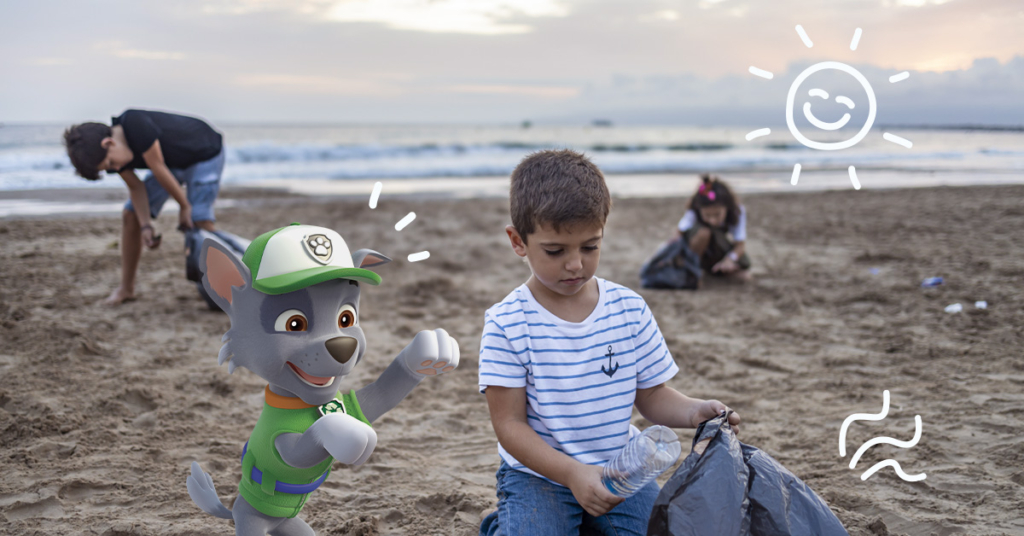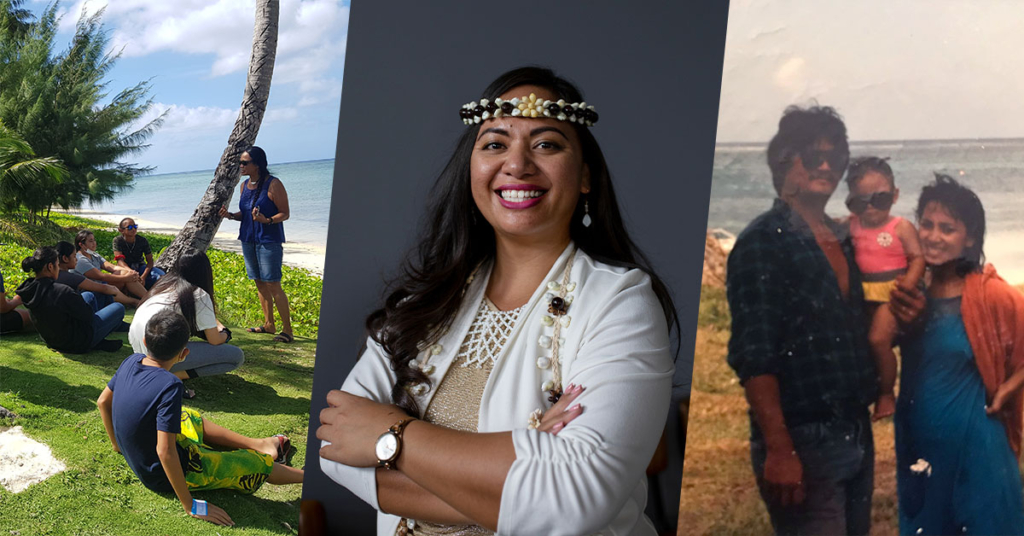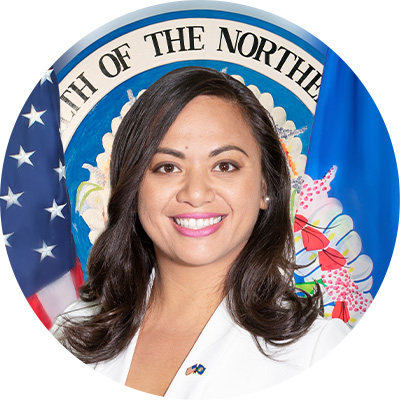- Social & Emotional
How Your Preschooler Can Change the World - One Ocean at a Time
An Interview with Climate Activist and Representative Sheila Babauta

Oceans cover more than 70% of our world’s surface and are home to over 90% of the world’s wildlife! And with climate change more present than ever, we need our oceans to breathe oxygen and to regulate our temperatures. Oceans have given us so much! But they need us too – no matter how old or young we are.
We spoke to Representative Sheila Babauta, who was born and raised on the island of Saipan, part of the Commonwealth of the Northern Mariana Islands, where several indigenous communities have lived for many generations.
When Sheila was as young as our Noggin learners, she thrived amongst the clear blue water of the ocean, dolphins, and colorful birds, and she learned about the ocean and how to care for it through the teachings of her indigenous ancestors. Her love for her community and land impassioned her to become a lifelong activist for not only oceans, but the climate change movement too.
One way she leads the movement is through her role as a U.S. representative for the Commonwealth of the Northern Mariana Islands. Did you know that the Commonwealth of the Northern Mariana Islands is home to the Marianas Trench, the deepest part of the ocean?

Left to right: Project HOPE / Portrait of Representative Babauta / Photograph of young Representative Babauta with her parents
We chatted with Sheila about why oceans matter, why kids should learn about them, and most importantly, how our little ones can change the world, one ocean at a time.
Why should we talk to young kids about oceans, and why are they important?
Sheila: Oceans contribute to quality of life for humans, which means we have to have a symbiotic relationship! We need to take care of the ocean so that the ocean can continue to take care of us. Talking to children early on about this relationship will give them time to embrace this responsibility as early on in life as possible. It’s a way of life for everyone, not just someone who has privilege or lives near the ocean, but for everyone.
In our islands, we say as adults that we are guarding the resources for those who come after us – our descendants. We each learn this concept and pay it forward. The more we teach about the environment through hands-on interaction, the more understanding and future ownership are experienced.
What do oceans have to do with climate change and the environment?
Sheila: We, on Earth, only have one ocean. Even though we identify the ocean in regions by different names, there is still only one ocean. This one ocean connects us all, feeds us all, and gives us fun things to do! At the same time, our ocean serves as a carbon sink – absorbing the most carbon dioxide than any other natural resource. She cares for us and has no voice in humanity. We have a duty to give a voice to nature with an eye toward building a mutually beneficial relationship.
In our islands, we say as adults that we are guarding the resources for those who come after us – our descendants. We each learn this concept and pay it forward. The more we teach about the environment through hands-on interaction, the more understanding and future ownership are experienced.
How do climate change and environmental changes impact children as well as indigenous communities?
Sheila: We see it all the time now! In the Marianas, we see storms with the intensity and frequency that used to happen once every 100 -years now happening only a couple of years apart. And then droughts right on the backside of catastrophic rain. In the mainland U.S., we see hurricanes, tornadoes and flooding. Across the planet, we see island nations “sinking” because of sea level rise. These people will have to migrate or be provided with other means of surviving. And children are the most vulnerable among us.
How do we educate young children about climate change and the environment in a way that still gives them hope?
Sheila: We can show them how the ocean works and how it plays a central role in all people’s lives. We can teach them how to build their lifestyle and behaviors to benefit the prevention of further damage, and even work towards healing. We can show them how it can be if we all work together. One way we can do this is by having them play in the ocean. Kids can snorkel, swim, and spend time creating happy memories, thanks to our oceans!
What are some tangible ways to involve a pre-k aged child in saving our oceans?
Sheila: Here are a few!

Model asking questions. Pre-K aged children can ask questions of everyone around them about things that they see – this holds adults accountable too! They can also shadow their older siblings or peers in ocean-related activities.



Teach them to identify environmentally friendly choices. For example, you could ask, “Why did mommy choose to use a cloth bag?” Let the child identify the answer, and you can reinforce the rationale behind it.



Help them learn that their actions will always affect others even if we can’t see how. Show them (non-scary) photos of climate damage or solid waste disasters, and talk about it. Ask them to identify how your family’s choice can make a difference.


When using media, select content that is curated towards lifestyle development that includes being the guardian of our oceans.


Secure your waste so that it doesn’t end up in the ocean.


Teach your child about leaders – ocean and environmental advocates – who decide to run for public office, and vote for them!
What are some tangible ways to involve a pre-K aged child in the climate change movement, which greatly affects indigenous groups?
Sheila: Kids can be a part of both simple changes to everyday living and climate-specific activities!



Help your child get involved with a local project, or, even better, create one! If no one is doing it, be the leader your community is waiting for. Even though our geographic locations may be worlds apart, we are all connected through the ocean. Your actions, where you are, affect us in ways that can mean life or death for communities like ours.



Teach your child to walk or ride a bike instead of using a car – when they can (and when they are old enough!).



Help them choose paper instead of plastic. Migrating away from dependency on fossil fuels is huge! Reducing dependency on fossil fuels is not just about going to electric vehicles. It also means moving away from plastics, especially single-use plastics.
In your work, how do you empower children in the movement? We would love to inspire our little ones!
Sheila: There are student projects all over the world! Some are focused on developing leadership skills, and others are simply doing good work in their communities. In my role as Chair for the Friends of the Mariana Trench, my favorite program is called Project HOPE: Healthy Oceans and People Empowerment. In this program, we mentor and empower our college students, who then recruit and teach 6th graders with our ocean elders and scientists in our community. We also have a program that will teach high school students how to include our elementary school students in their stewardship work.
At Noggin, we love oceans too! With the help of PAW Patrol, Diego, and Dora, Kai-lan, and more, your little one can explore, learn about, and support the one ocean that connects us all!


About the Author
A daughter of the CNMI, Sheila Babauta, is passionate about contributing to a brighter Marianas. At the age of 29, she gained the trust and confidence of her community in Precinct 4 and began serving as a member in the 21st CNMI House of Representatives. Sheila continues to serve in the 22nd CNMI Legislature and currently holds key leadership positions as Chairwoman of the Natural and Cultural Resources Committee, Vice-Chairwoman of the Education Committee, and Floor Leader of the Saipan and Northern Islands Legislative Delegation.
See What Kids Learn with Noggin


Discover Your Child's Favorites


Give Noggin a Try
Kid-safe & ad-free
Accessible on multiple devices
New content added weekly
Downloadable books & games for offline play
Kid-safe & ad-free
New content added weekly
Accessible on multiple devices
Downloadable books & games for offline play


